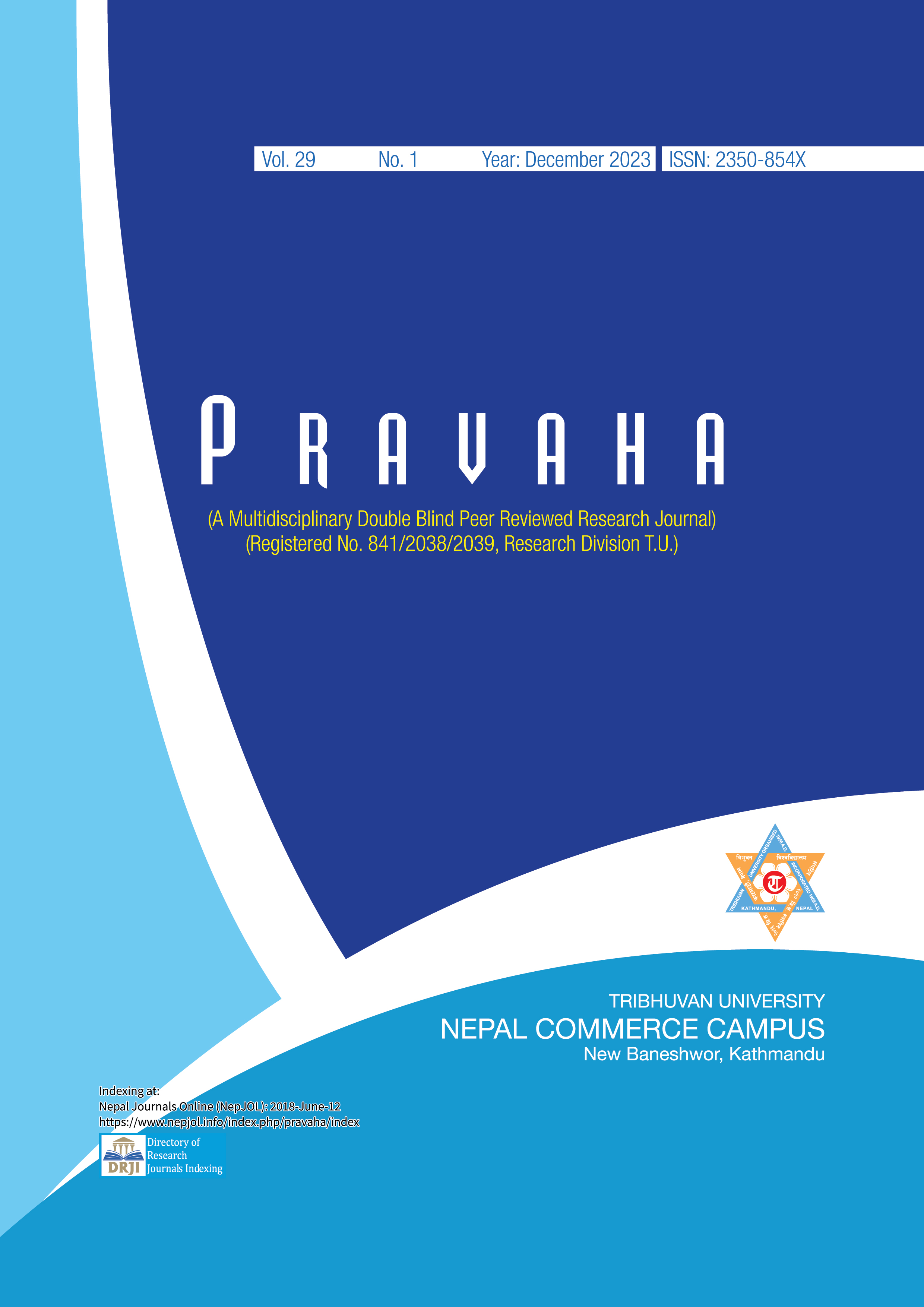Bank Regulation and Market Risk of Nepalese Commercial Banks
DOI:
https://doi.org/10.3126/pravaha.v29i1.71406Keywords:
Market Risk, broad money supply, base rate, spread rate, bank capital, loan loss reserve, commercial bankAbstract
The purpose of this study is to measure the impact of banking regulations specifically broad money supply, weighted average spread rate, base rate, bank capital, and loan loss reserve on market risk of commercial banks in Nepal. This study used descriptive, correlational, and casual comparative research design. This study has used secondary sources of data. Data were used of twenty-six, out of twenty-seven commercial banks from fiscal year 2012/13 to 2018/19. After 2019/20 fiscal year to 2021/22, data were collected from nineteen commercial banks. Rastriya Banijya Bank, Government owned bank not included in this study. The statistical methods employed in this investigation for data analysis included mean, range, coefficient of variation, correlation analysis, and regression analysis. This study presented that highest to lowest scattered data as market risk, loan loss reserve, bank capital, broad money supply, base rate, and weighted average spread rate respectively. There is low degree of inverse relationship between market risk and base rate but there is insignificant relationship of market risk with weighted average spread rate, broad money supply, bank capital, and loan loss reserve. There is positive significant impact of broad money supply and weighted average spread rate on market risk but there is negative impact of base rate on market risk, insignificant impact of bank capital and loan loss reserve on market risk of commercial banks in Nepal.
Downloads
Downloads
Published
How to Cite
Issue
Section
License
© Nepal Commerce Campus, TU
Authors are required to transfer their copyright to the Nepal Commerce Campus, TU.




